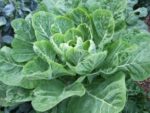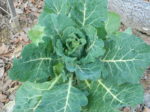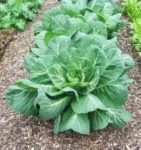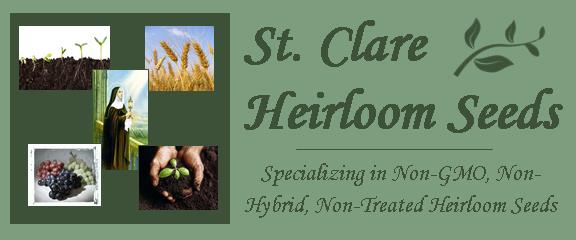Collards Seeds
Scroll down to see seeds for sale!
Native to Eastern Europe and Asia Minor, collards belong to the cabbage family and actually descended from wild cabbage. Collards have been domesticated for thousands of years, although relatively unknown in the United States until African American families incorporated their ethnic tradition of collards into Southern culture.
The amazing high levels of fiber, antioxidants, folate, magnesium, iron, potassium, magnesium, calcium, thiamine, niacin, phosphorus, zinc and vitamins A, B-6, C, E and K in collards are known to improve bone health, balance blood sugar, prevent heart disease and heal the liver. Collard greens have potent properties that kill viruses and bacteria, along with choline, which strengthens muscles, reduces inflammation and auto-immune disease, fights depression, and also improves sleep, learning, and memory.
Both the stalks and large green leaves can be eaten, either raw in salads, slaw and juices, or used in soups, stews, roasted as chips or as a side dish. Collards are best known in the South, especially served as ‘soul food’ where they are boiled with lots of ham or bacon pieces, onion and salt in the Southern tradition of using lots of fat and seasonings. The flower blooms are also edible, although once the plant blooms, the nutritional quality of the leaves is decreased. Be careful not to overcook collards when boiling, as this will decrease flavor.
A biennial plant, collard leaves become sweeter and more tender when they experience frost. Plant your St. Clare Heirloom collards seeds early in the Spring, about 6 to 8 weeks before the last frost and during the Summer from mid-June to mid-July, followed by a harvest 6 to 8 weeks later.
Showing all 3 results
-
 OUT OF STOCK
OUT OF STOCKCollards – Champion
$2.59View ProductRead more(Brassica oleracea L. Acephala ) 75 days. Champion Open Pollinated Collards have large dark green leaves that are slightly crumbled with a mild cabbage like flavor. Plants are very vigorous and frost tolerant. Champion Collards are great for spring or summer greens.
250 Seeds per pack
-

Collards – Georgia
$2.59View ProductAdd to cart(Brassica oleracea L. Acephala ) 80 days. Georgia Open Pollinated Collards are very winter hardy and used primarily in the south. Georgia Collards are vigorous, 2 to 3' tall with crumbled leaves.
250 Seeds per pack
-

Collards – Vates
$2.59View ProductAdd to cart(Brassica oleracea L. Acephala ) 75 days. Vates Open Pollinated Collards is non heading and is also bolt and frost resistant. Vates has dark green crumpled leaves on vigorous spreading, upright 24" to 32" plants. Leaves are large and cabbage like.
250 Seeds per pack
Showing all 3 results

